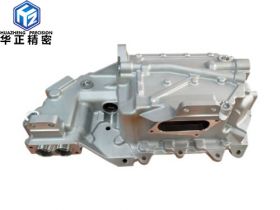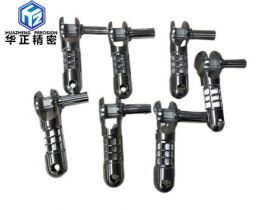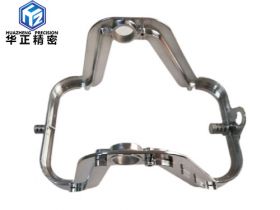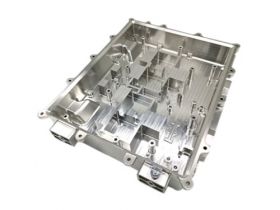News
Recommended Products
Contact Us
Contact Person: Cindy Zhu
TEL:+86 13418453374
How to improve the yield rate of shaft parts processing?
How to improve the yield rate of shaft parts processing?
Shaft parts are a very common type of parts. Its structure is a rotating body, and its length generally exceeds the diameter. It is widely used in various mechanical equipment to support transmission parts, transmit torque and bear load. The shaft is precise The processing of parts needs to follow certain rules.
1. Pre-processing of shaft parts. Shaft parts need to prepare some processes before turning the outer circle. This is the pre-processing process of shaft parts. The most important preparation process is straightening, because part blanks often occur during manufacturing and transportation. Bending deformation, in order to ensure reliable clamping and uniform distribution of process allowances, in the cooling state, it is straightened by various presses or straightening machines.
2. The basic processing route of shaft parts. The main machining surfaces of shaft parts are outer circular surfaces and common special surfaces. Therefore, the most suitable machining method should be selected according to the requirements of various precision levels and surface roughness, and the basic machining routes can be summarized into four.
The first is the machining route from rough turning to semi-finishing turning and then finishing turning. This is the most important process route selected for the simplified outer circle machining of common materials and shafts, and the second is from the rough turning tool version. , Then to rough grinding, and finally adopt the processing route of fine grinding. For ferrous metal materials and main process routes, followed by parts with relatively small surface roughness requirements and sudden hardening, this processing route is the best choice. Because grinding is the most ideal subsequent processing procedure; the third route is from rough turning tool semi-finish turning, then to fine turning, stainless steel stone turning, this processing route is dedicated to processing non-ferrous metal materials, because of the hardness of non-ferrous metals It is relatively small and easy to block the gaps between sand particles. It is usually not easy to obtain the required surface roughness by grinding. It is necessary to use fine turning and diamond turning processes; the last processing route is from rough turning tool to semi-finishing turning to Grinding, fine grinding, and finally smooth processing. This route is hardened for ferrous metal materials, and requires relatively high accuracy, and parts with relatively low surface roughness requirements are a processing route that is often used.
3. Clamping of shaft parts. The processing of taper and taper sleeve mandrel must have high machining accuracy. If the center hole not only manufactures its own positioning datum, but also the datum for finishing the outer circle of the hollow shaft, it is necessary to ensure the taper or the taper surface of the taper sleeve mandrel. It has a relatively high coaxiality with the center hole. Therefore, you need to pay attention when choosing the clamping method. It is necessary to minimize the number of taper installations to reduce the repeated installation error of the parts. In actual manufacturing, after the taper is installed, generally speaking Before processing is completed, it will not be removed or replaced in the middle of processing.
4. Positioning datum for machining shaft parts. First of all, the center hole of the workpiece is used as the positioning reference for machining. In the processing of shaft parts, the coaxiality of each appearance surface, tapered hole, and threaded surface, and the perpendicularity of the end face to the axis of rotation are the main manifestations of unknown accuracy. These surfaces are generally based on the centerline of the shaft as the design reference, and the center hole is used for positioning. The composite datum coincides with the unified principle of the datum. When the center hole is not only the positioning datum during turning, it is also the positioning datum and verification datum for other machining processes. , The unified principle of composite datum, when the two center holes are used for positioning, it is possible to clamp the middle heel as much as possible to process multiple outer end faces once again.
Secondly, the outer circle and the center hole are used as the positioning reference for machining. This method effectively overcomes the shortcomings of poor positioning rigidity of the center hole, especially when processing relatively medium parts, the positioning of the center hole will cause the clamping to be inadequate and the cutting amount will also be reduced. It can’t be too big. When using the outer circle and center hole positioning reference, there is no need to worry about this problem. When rough machining, the method of using the outer circle surface of the shaft and the center hole as the positioning reference can withstand a relatively large cutting torque during processing. The most common positioning method for similar parts.
Prev: Environmental requirements of CNC machine tool processing
Next: How to make five-axis CNC machining simple and convenient
Back















